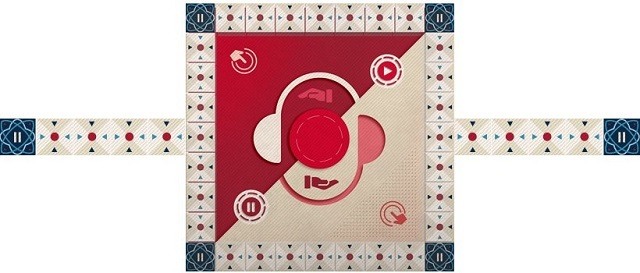8 Instructional Design Trends And Learning Trends For 2018
What is a learning trend? A new shiny object that is the current buzz? Something that’s been around for a while but is now gaining adoption? Something born from technology innovation or a shift in learner demographics?
The answer is all of these things, and more. As we all gear up for another exciting year in the world of Learning and Development, let’s take a look at the Instructional Design trends and learning trends that will be shaping the industry in 2018. View our infographic featuring 2018 instructional design trends.

1. Learning Personalized For You
Welcome to the age of personalization. For years, Amazon’s been offering up products you may like based on your past purchases. We’re not as shocked when ads appear on websites and social media based on our recent searches. Your news app delivers stories based on your topic preferences. Netflix recommends new shows—and even gives you a percentage “match” based on your viewing habits.
So much of what we see, hear, and read is tailored specifically to us. Why? The reason is simple—we’re more likely to consume information (and buy a product) that is relevant and timely to our needs.
It’s no surprise that personalized learning is coming into focus. Competing for employee mindshare is tough. Offering personally tailored learning programs that are relevant and timely seems to hold promise.
So, where are we with this learning trend?
“I’m seeing a huge demand for adaptive learning,” says SweetRush Solution Architect Annie Hodson. “Learners expect content that is personalized and strongly prefer to learn from teaching methods that are also personalized.”
This year, expect to hear more about technology-enabled personalization as Artificial Intelligence (AI) shifts from science fiction to household word, thanks to chatbots such as Siri and Alexa.
Annie Hodson says that AI is great for recommending the best learning resources for each learner, which benefits learners and addresses a major pain point in Learning and Development. “Organizations are frustrated that their learning materials are difficult to access or hard to find, so adaptive learning platforms make it easy for the best, most applicable materials to rise to the top.”
Technology also enables curation of learning resources—again, they are personalized to the individual learner’s interests and what he or she needs to learn to do the job better.
Think about it. Where do you go to learn new stuff? Google? YouTube? Organizations must compete with all the articles and videos available at your fingertips—and that content may not align with how they’d really like you to do your job.
This year, we’re betting you’ll hear more about curation platforms, such as EdCast, that serve up learning resources from trusted sources and that use AI to find and rank that content.
Many of these strategies support the shift from entirely push-based learning cultures—in which management decides what employees need to learn and “pushes” it to them—to integration of pull-based learning, another trend on the rise.
Stephen J. Gill, author of Minds at Work: Managing for Success in the Knowledge Economy, describes pull-based learning [1] as a “decentralized, bottoms-up approach in which employees access the information they need when it is needed.”
In other words, you, the learner, decide what you need to know to do your job better, and your organization offers the tools and resources to help you learn. You’re acting on your own desire to learn, your internal motivation, which helps you pay attention and retain the information better.
All of this may leave you with one burning question: Do I need to spend hundreds of thousands or millions of dollars to build or buy technology to support personalization?
Not necessarily, our experts say.
“The trend is the personalization of learning, not the specific way to do that, which could be a lot of things,” says Clare Dygert, SweetRush’s Director of Instructional Design.
Sure, technology-enabled personalization will come into focus for some organizations (Clare Dygert cites examples of “recommended content, interactive video, responsive design, analytics, or adaptive learning”), but low-tech methods of personalization will be just as important. She predicts L&D will explore the use of “learning paths, affinity groups, learner-contributed content, and coaching instead of facilitation at ILT and vILT events.”
John Cleave, Ph.D., an eLearning Technologist at SweetRush, agrees: “One example is to periodically assess a learner's knowledge within an eLearning module and provide additional resources or tutoring only when it's needed. So if someone is clearly proficient, you don't waste their time. This doesn't take new technology. It's simply a different way to design.”

2. Meeting Learners Where They Are
Let’s circle back to one of the key challenges for learning professionals: competing for employee mindshare. The demands of the job, information coming from all directions, not to mention our busy personal lives, leave us little time to focus on learning. Research from Bersin by Deloitte [2] suggests that “in a given week, employees take less than 25 minutes of time to actually slow down and learn.”
When and where do we have time? On the bus or plane. In the car. Right before that meeting with a new client.
It seems we are all best friends with our phone and tablets, and we’re stealing a few minutes here and there, wherever we can, to better ourselves and increase our knowledge. “With increasingly flexible schedules, the need for learning that isn't tethered to a desk is much greater,” says Chris Nelson, a SweetRush Creative Director.
No surprise then that in the past few years, we’ve seen a steady, significant rise in demand for mobile learning and microlearning. Sure, these are no longer the new kids on the block. But within these areas, we’re starting to see new trends emerge.
Mobile learning design is shifting to mobile-first learning design. “It used to be that we would design for a desktop and think about how that would convert to a mobile experience,” says Emma Klosson, a SweetRush Instructional Designer. “But we really need to be thinking about things the other way around.”
Driving this transition are changing demographics in the workplace and the proliferation of devices, says Andy LaPage, an Instructional Designer at SweetRush. “Millennials have growing influence over how learning in consumed. Phones and tablets are everywhere, and people turn to them more than they do a traditional desktop.”
The key for Instructional Designers is really a shift in mindset—and an extreme focus on the learning experience and user experience. Emma Klosson says, “We have to rethink what is possible, and rather than see [mobile] as a limiting modality, we need to think of it as the primary way that most people acquire learning these days.”
Transforming heaps of content into microlearning is a challenge for any Instructional Designer, but the just-in-time nature of bite-sized training makes this Instructional Design trend a hit with learners.
And organizations are getting the message. “There is recognition among employers that lengthy eLearning makes learners ‘drink from a fire hose,’” says Gail Eisenstein, a SweetRush Instructional Designer.
Microlearning and personalization walk hand in hand in the curation platforms discussed earlier. “The idea is, in a rapidly changing and increasingly learner-centric world, how do you offer relevant information to people on an ongoing basis that they can consume as a buffet or vending machine, rather than sitting down at a dinner table?” John Cleave asks.
Research published last year by Bersin by Deloitte suggests there’s a time and place for both macrolearning and microlearning [2]: Macro when you want to learn a “whole new domain,” or you’re at a career milestone (new job, promotion); micro when you “need help now” and consume information that takes “10 minutes or less.”
So while the trend may shift us toward microlearning, savvy learning and development professionals will know when just-in-time, on-demand training is the right solution, and when to go deep to support career growth and transition.

3. Oh, The Places You’ll Go—In New Realities
If we start rating these learning trends on a heat scale, immersive experiences, Virtual Reality (VR), and Augmented Reality (AR) are pretty much on fire.
Nearly all our experts predicted that we’ll start to see learning programs enabled by emerging technology this year. “There will likely be plenty of companies wanting to test the water,” Chris Nelson says.
While both VR and AR cleared the gate within the past few years, AR may pull ahead with greater adoption this year. “[AR is] still new, but more and more devices support it, and it's simpler to use than VR,” says Andrew Kubay, a Lead Engineer at SweetRush.
We already mentioned applying artificial intelligence to further personalization. Another application of AI that’s trending is using the technology to create better learning experiences.
Adrian Soto, Director of Future Technologies at SweetRush Spark (our division dedicated to emerging technologies), says that AI holds tremendous potential to “develop automated learning instructors and more realistic learning simulations.”

4. Video Killed The Textbook
“The statistics tell us video usage is growing rapidly,” says Pablo Barrantes, a SweetRush Creative Director. He cites research indicating that “more video content is uploaded in 30 days than the major U.S. television networks have created in 30 years.” [3]
Social media platforms such as Facebook and Instagram, which started with written content and static images, saw their real-time video distribution features explode in popularity.
When it comes to video as a learning modality, is this a case of what’s old is new again? The more mature (ahem, in age) among us will remember sitting in a sad conference room, watching an onboarding or safety video on VHS.
These days, CreativeLive and others offer full-length, lecture-style videos for learning. What’s changed?
The answer is simple. We’re seeing video evolve as we combine it with other trends.
Video + microlearning = bite-sized video segments that, put together, add up to a more comprehensive course. On-demand video libraries allow learners to search and find specific topics and how-to videos that meet their just-in-time needs.
Video + social learning = filming and live-streaming the classroom in real time and allowing learners in other locations to contribute comments and questions, making for a richer and more inclusive classroom experience.
Video + storytelling = live video and animation that tells a story, which, for learners, increases engagement and deepens the connection with the material. Low-cost animation can also help with marketing learning programs—in this case, making the case for WIIFMs.
All of us now have a video camera in our pocket, and distribution is free and easy, so these leanring trends will surely stay in focus.

5. Data: Collected, Analyzed, And Visualized
Do you truly care about making people smarter? If you do, our experts suggest that you should make applying data science to learning your focus in 2018.
“Instead of simply devising training, rolling it out, and hoping it works—that is, a first-best-guess at what a learner needs—use the training to gather data on how people think, believe, and act, for example, in simulated situations. Then use that data to drive further training decisions,” says John Cleave.
Andrew Kubay agrees, calling data “a very, very powerful tool for analysis that can help improve eLearning in any company.”
Custom tracking systems using Experience API (xAPI) can help collect data about learning experiences and build more flexible solutions. Andrew Kubay acknowledges adoption is moving slow but predicts we’ll hear more about them this year.
And in the what’s-old-is-new-again category, we return to the brilliant work of Edward Tufte [4], because data in a spreadsheet doesn’t really help anyone, does it? If we’re going to use and apply data effectively—either to improve training or in the actual instruction—data visualization comes into focus as a learning trend.

6. The New Classroom
With all the options for digital and online learning, are we seeing a decline in instructor-led training? Our experts say no. But learning trends are continuing—and emerging—that will shape the “new classroom” for years to come.
“Given widespread use of virtual meeting technology and ability to connect easily with colleagues across geographies, more and more instructor-led, live classroom courses will convert to virtual instructor-led training,” says Gail Eisenstein.
Virtual instructor-led training (vILT) also offers cost savings while retaining the live connection to instructors and peers.
But the downside of vILT is that the audience is no longer captive in your physical classroom, which leaves them exposed to attention-grabbing devices, email, and pinging chat requests.
To combat this, a trend on the rise is integrating mobile devices in the virtual classroom. We recently developed a custom application for a client that allows facilitators to push games and networking activities to learners via their phones. And—just like that—you regain their attention.
Another trend that we’re starting to see in the new classroom is “instructors as coaches vs. facilitators,” Clare Dygert says.
In blended learning, we often see a flipped classroom in which eLearning prework includes knowledge-based content and the classroom portions focus on skills and practice. This shifts the role of the instructor from delivering a lecture to supporting and coaching learners as they practice new skills.
Emma Klosson says this approach is really impactful, “not only from a participant's point of view but also from the instructor’s.” She says instructors “are reporting that the discussions and activities carried out within the classroom portion of the course are at a much higher level.”

7. Closing The Creativity Gap In Instructional Design
With these new modalities and technologies, the demand for creativity is at a fever pitch. Shifting away from slide-based eLearning toward techniques such as storytelling and gamification, and designing for mobile learning, microlearning, video, and VR/AR, means rapid change in the day-to-day work of an Instructional Designer.
“Companies are asking us to help them be more like us—having us coach them on how to develop highly creative teams,” says Clare Dygert. “They want to understand not just what we do, but how we do it.”
Where does creativity come from? And how can we help upskill Instructional Designers and eLearning teams?
An Instructional Design trend on the rise is applying the creative strategies of design thinking to building more engaging and impactful learning experiences. Rosa Ramos, a SweetRush Creative Director, suggests design thinking can “help us with creativity and confidence when we develop learning courses or experiences.”
“Design thinking is all about centering on the learner’s experience in your ideation,” says John Cleave. At SweetRush, we distilled the principles that create a foundation for creativity in our work. The first one, “Step into their shoes,” is meant to encourage learner-centric design through empathy, an important tenet of design thinking.

8. Reimagine, Redesign, Redeploy
We can all agree that we’re living in a time of rapid change—and for many companies, that’s driving a rising need for reimagining learning and program redesign. Many organizations are taking the time to look at their culture of learning as a whole, as well as the efficacy of their existing programs.
“This work involves going back to basics and looking at roles and responsibilities and the associated knowledge, skills, and behaviors needed to be successful and thinking about the change in learning modalities and the learners' and organizations' preferences,” Emma Klosson says.
An article in Chief Learning Officer magazine highlighting 2017 Learning Elite winner Deloitte [5] suggests the company looks favorably on program redesign. Their take is that “looking critically at a program that’s been in place a few years to consider how technology can bring the program to life and what is the best way to drive performance, is the right thing to do.”
How These Trends Come Together: Learning As A Journey
Our goal with this article is to highlight specific Instructional Design trends, and generally, learning trends, for which we’ll likely see growing demand or interest this year. But none of these trends exist in a vacuum, and the most successful organizations will consider how to best use them in an integrated, holistic way.
Rather than viewing learning as a one-time event, “learning is a process that happens over time, through formal, informal and self-perpetuated means,” John Cleave says. “Learning as a journey goes beyond pushing out a linear sequence of modules. It means creating a tapestry of experiences: training modules, curation, social media and feedback, events, and continuous data analytics to understand where people are at and where they would like to go.”
That’s a strategic vision that we predict Chief Learning Officers worldwide will begin to embrace.
From our team at SweetRush, wishing you all a creative, productive, and fabulous 2018!
Footnotes:
- Pull, Don’t Push, Employee Learning
- The Disruption of Digital Learning: Ten Things We Have Learned
- More video is uploaded every 30 days than total amount created by top 3 U.S. TV networks in the past 30 years
- Edward Tufte
- Chief Learning Officer - June 2017











